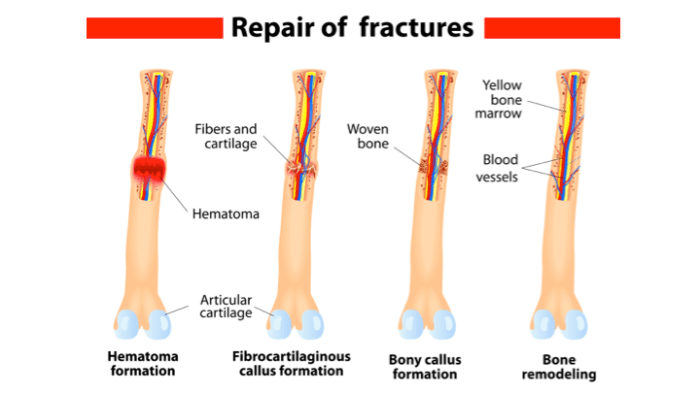Surgical and fracture repair codes in the musculoskeletal subsection play a crucial role in ensuring accurate and appropriate reimbursement for medical procedures. This guide delves into the intricacies of these codes, providing a comprehensive overview of their use and impact.
From understanding the different types of surgical and fracture repair codes to navigating the guidelines for their proper application, this guide serves as an invaluable resource for healthcare professionals.
Surgical Codes for Musculoskeletal Repair: Surgical And Fracture Repair Codes In The Musculoskeletal Subsection

Surgical codes used in musculoskeletal repair provide a standardized way to describe the procedures performed. These codes are used for billing purposes and to track the quality of care provided. There are several different coding systems used for musculoskeletal repair, including CPT codes, HCPCS codes, and ICD-10 codes.
The appropriate coding system to use will depend on the specific procedure being performed.
CPT codes are the most commonly used coding system for surgical procedures. They are published by the American Medical Association (AMA) and are updated annually. CPT codes are five-digit codes that describe the specific procedure performed. HCPCS codes are also used to describe surgical procedures.
They are published by the Centers for Medicare & Medicaid Services (CMS) and are updated quarterly. HCPCS codes are used to describe procedures that are not included in the CPT code set. ICD-10 codes are used to describe diagnoses. They are published by the World Health Organization (WHO) and are updated every 10 years.
ICD-10 codes are used to describe the patient’s condition or injury.
When selecting the appropriate surgical code for a musculoskeletal repair procedure, it is important to consider the following factors:
- The type of procedure performed
- The location of the procedure
- The complexity of the procedure
- The patient’s condition or injury
By considering these factors, the coder can select the most accurate and appropriate surgical code for the procedure performed.
Fracture Repair Codes for Musculoskeletal Injuries
Fracture repair codes are used to describe the procedures performed to repair a broken bone. These codes are used for billing purposes and to track the quality of care provided. There are several different coding systems used for fracture repair, including CPT codes, HCPCS codes, and ICD-10 codes.
The appropriate coding system to use will depend on the specific procedure being performed.
CPT codes are the most commonly used coding system for fracture repair procedures. They are published by the American Medical Association (AMA) and are updated annually. CPT codes are five-digit codes that describe the specific procedure performed. HCPCS codes are also used to describe fracture repair procedures.
They are published by the Centers for Medicare & Medicaid Services (CMS) and are updated quarterly. HCPCS codes are used to describe procedures that are not included in the CPT code set. ICD-10 codes are used to describe diagnoses. They are published by the World Health Organization (WHO) and are updated every 10 years.
ICD-10 codes are used to describe the patient’s condition or injury.
When selecting the appropriate fracture repair code for a musculoskeletal injury, it is important to consider the following factors:
- The type of fracture
- The location of the fracture
- The complexity of the repair
- The patient’s condition or injury
By considering these factors, the coder can select the most accurate and appropriate fracture repair code for the procedure performed.
| Type of Fracture | Location of Fracture | Code |
|---|---|---|
| Closed fracture | Humerus | 24510 |
| Open fracture | Femur | 27230 |
| Displaced fracture | Tibia | 27750 |
| Nondisplaced fracture | Radius | 25600 |
Commonalities and Differences Between Surgical and Fracture Repair Codes, Surgical and fracture repair codes in the musculoskeletal subsection
Surgical and fracture repair codes share some commonalities. Both types of codes are used to describe procedures performed on the musculoskeletal system. Both types of codes are also used for billing purposes and to track the quality of care provided.
However, there are also some important differences between surgical and fracture repair codes.
One of the most important differences between surgical and fracture repair codes is the level of detail. Surgical codes are typically more detailed than fracture repair codes. This is because surgical codes describe the specific steps of the procedure, while fracture repair codes only describe the overall procedure.
Another difference between surgical and fracture repair codes is the way they are organized. Surgical codes are organized by the type of procedure performed, while fracture repair codes are organized by the location of the fracture. This difference in organization reflects the different ways that surgical and fracture repair procedures are performed.
Despite their differences, surgical and fracture repair codes are both essential for the accurate and efficient billing of musculoskeletal procedures. By understanding the commonalities and differences between these two types of codes, coders can ensure that they are using the correct codes for the procedures performed.
Guidelines for Using Surgical and Fracture Repair Codes
There are a number of guidelines that coders should follow when using surgical and fracture repair codes. These guidelines include:
- Use the most specific code that describes the procedure performed.
- Do not use codes for procedures that were not performed.
- Do not use codes for procedures that are included in another code.
- Use modifiers to indicate any additional procedures that were performed.
- Document the medical necessity for all procedures performed.
By following these guidelines, coders can ensure that they are using surgical and fracture repair codes accurately and appropriately.
Impact of Surgical and Fracture Repair Codes on Reimbursement
Surgical and fracture repair codes have a significant impact on reimbursement for musculoskeletal procedures. The codes determine the amount of payment that is received for a given procedure. This is because the codes are used by insurance companies to determine the level of reimbursement for the procedure.
The impact of surgical and fracture repair codes on reimbursement can be significant. For example, a procedure that is coded as a surgical procedure may be reimbursed at a higher rate than a procedure that is coded as a fracture repair procedure.
This is because surgical procedures are typically more complex and require more time and resources to perform.
It is important for coders to understand the impact of surgical and fracture repair codes on reimbursement. By using the correct codes, coders can ensure that their patients receive the appropriate level of reimbursement for the procedures performed.
FAQ
What is the difference between a surgical code and a fracture repair code?
Surgical codes describe the surgical procedure performed, while fracture repair codes specifically indicate the type of fracture and the method used to repair it.
How do I determine the appropriate surgical or fracture repair code to use?
The appropriate code is determined based on the specific procedure performed, the location of the injury, and the type of repair technique employed.
What are the consequences of using incorrect surgical or fracture repair codes?
Incorrect coding can lead to denied claims, delayed reimbursement, and potential penalties.

